Newton Nursery History
Newton Nursery History
In the aftermath of the Great War, Britain was highly depleted of woodland. The recent war had shown how poorly stocked the land was when timber was needed. Indeed, just 5% of the UK was forested.
In 1919, the government created the Forestry Act, and brought the Forestry Commission into being. The goal was to set up and oversee a reafforestation plan to meet Britain’s timber needs in future. Over the next 10 years vast tracts of land were acquired by the Commission, with over 138,000 acres of new trees planted.
To plant at such a rate required an efficient supply of seeds and saplings. The creation of tree nurseries throughout the country was intended to meet this need. The nurseries would harvest seeds and plant them in order to grow saplings which would then be sent to forests across the country for planting. In 1931, land near Elgin was purchased for one such nursery, which would become Newton Nursery.
This area, east of Inverness, was ideally placed. The weather in this part of Scotland is significantly drier than most other areas of the UK, and sees more sunshine too. The fertile soil and stable conditions made growing very efficient, and still does today. Along with other nurseries, Newton grew millions of trees that were sent to forests the length and breadth of the UK to create much needed forests.
Since the start in the 1930s, Newton’s role has remained much the same. There is still a need for more woodland and forests in Scotland, and the staff at Newton still work to harvest seeds and grow saplings to fill that need.
The early days involved more manual labour than now, though you may be surprised to learn how much is still done manually by the dedicated work force. Out in all weathers, it is not an easy job. However, it is increasingly vital. Newton is the last of our (Forestry and Land Scotland’s) nurseries. Every year it provides around 7 million trees for Scotland’s forests.
New investment means this capacity will at least double over the next few years. New technology will also help the team there become more efficient, and make better use of the resources at hand.
The photos below provide a taste of Newton Nursery through the years. Photos are courtesy of Forestry Memories unless otherwise stated.
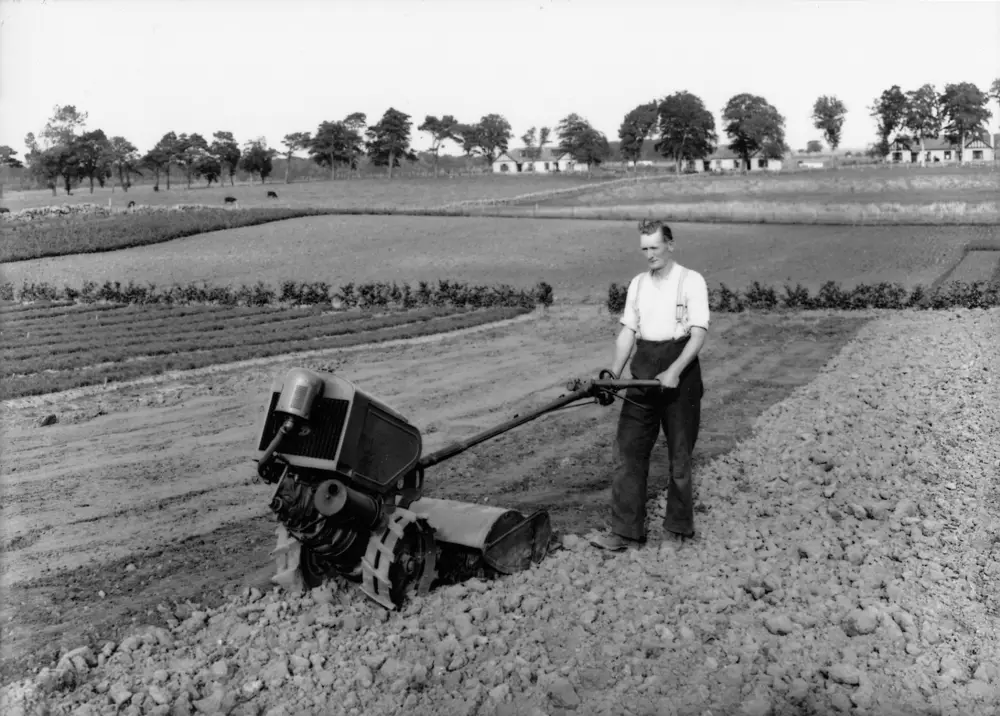
1930s - Thought to be taken in 1936, this image shows an operator rotovating a field at Newton Nursery.
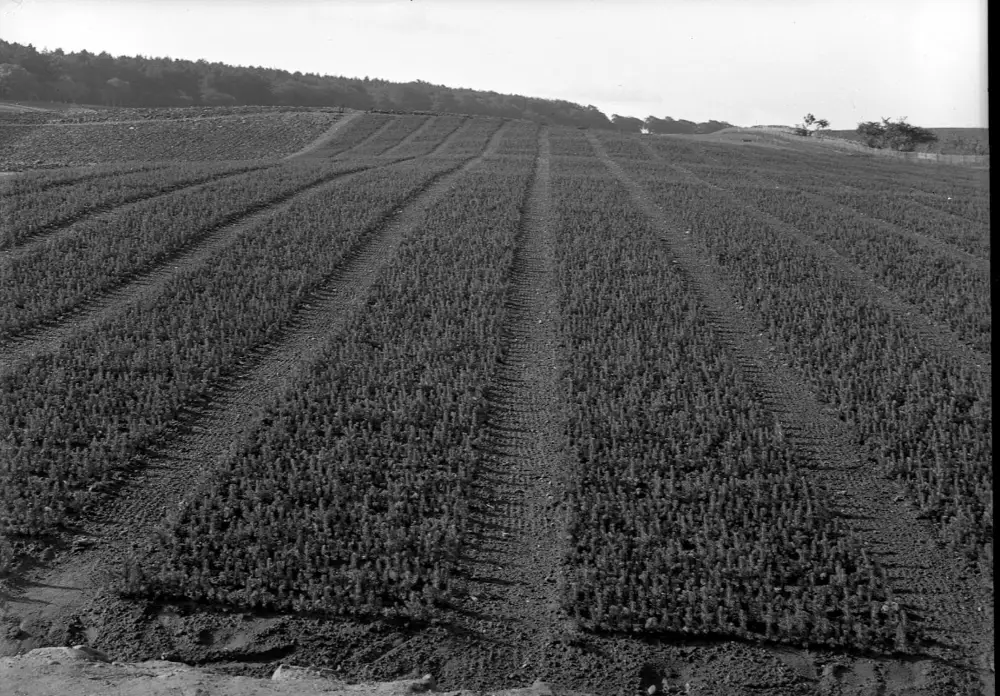
1930s - Young Sitka spruce transplant beds that have been transplanted by hand using `Ledmore Boards’.

1930s - Here, seed beds are shaded with rolls of laths resting on post and wire supports.

Late 1940s - A team of women working at Newton in the aftermath of World War II.

1950s - Small tractor pulling an undercutting bar through a seed bed.
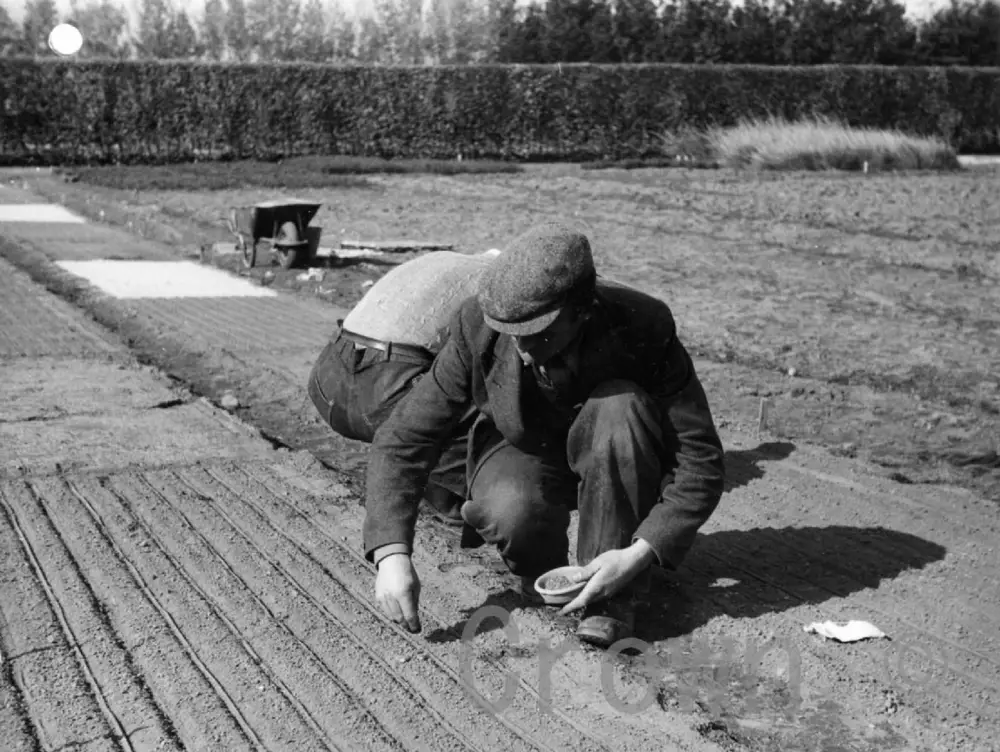
1950s - Hand sowing of seeds into drills. Each dish of seed would be enough to plant 9 drills (the long lines in the soil).
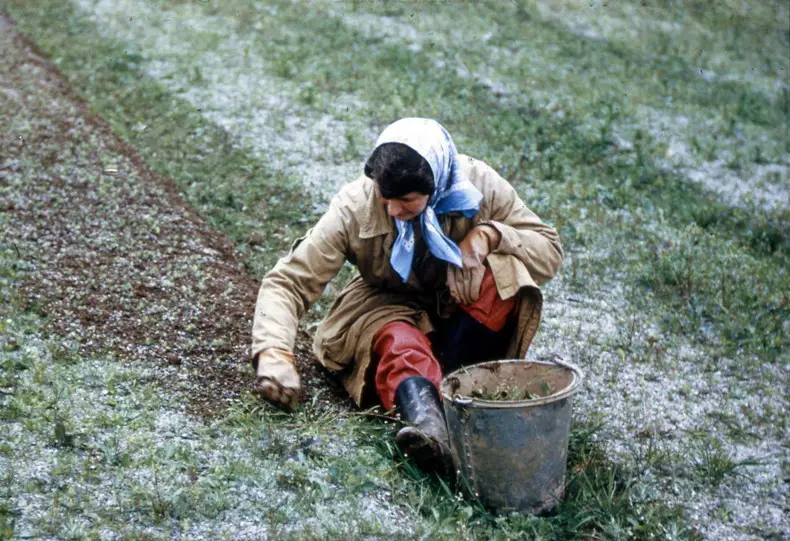
1970s - Weeding is a task that never goes away. Hand weeding the fields takes time and effort.

1970s - Collecting seeds from larch in a seed orchard at Newton. Seed orchards were grown from seeds from the best specimens in the country, which then provided the start for a new generation of trees to be grown in the nursery.

1970s - Newton Nursery is also home to a branch of Forest Research, and the site has been used to test, develop and pioneer new techniques over the years. Here, Sitka spruce cuttings are growing in a poly tunnel which housed around 100,000 cuttings.
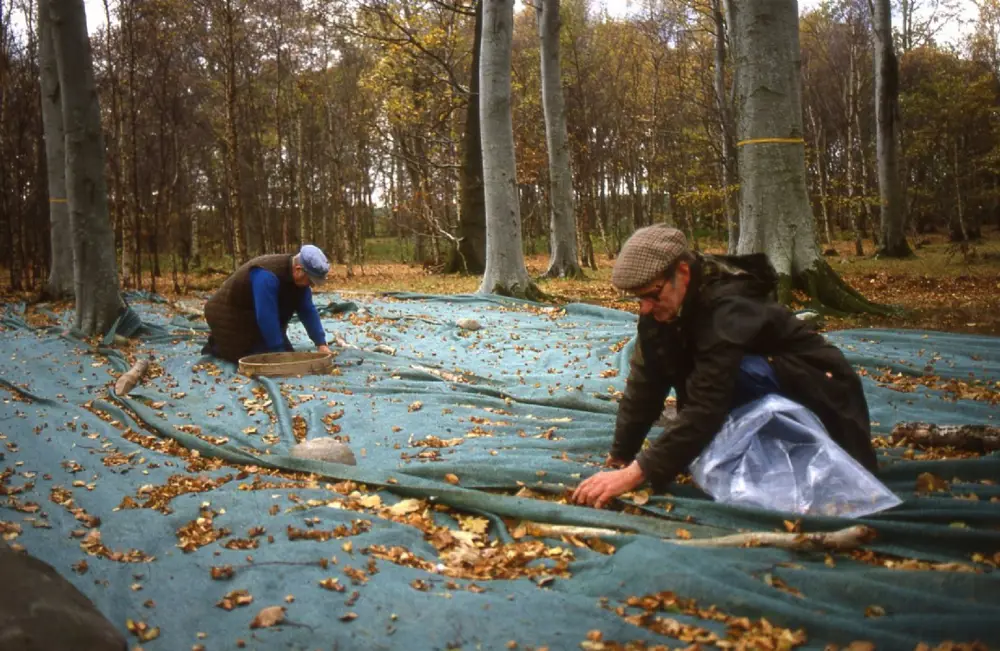
1980s - Canvas mats are often laid under trees to help catch falling seeds, and make them easier to collect than from the undergrowth.

1981 - Hand lifting of Sitka spruce transplants for delivery to the forest planting sites. The plants are being lifted upwards by a blade drawn at an angle through the soil. The slackened plants are then pulled up by hand, counted, and tied in bundles of 100 or 50 as required.
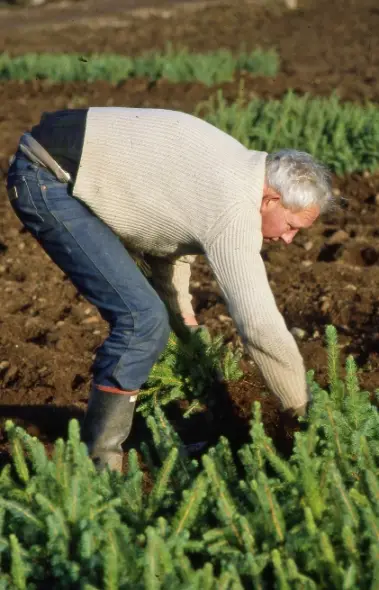
1981 - After loosening with a tool on a tractor, Sitka spruce is then pulled up by hand and gathered in bundles ready for transportation.
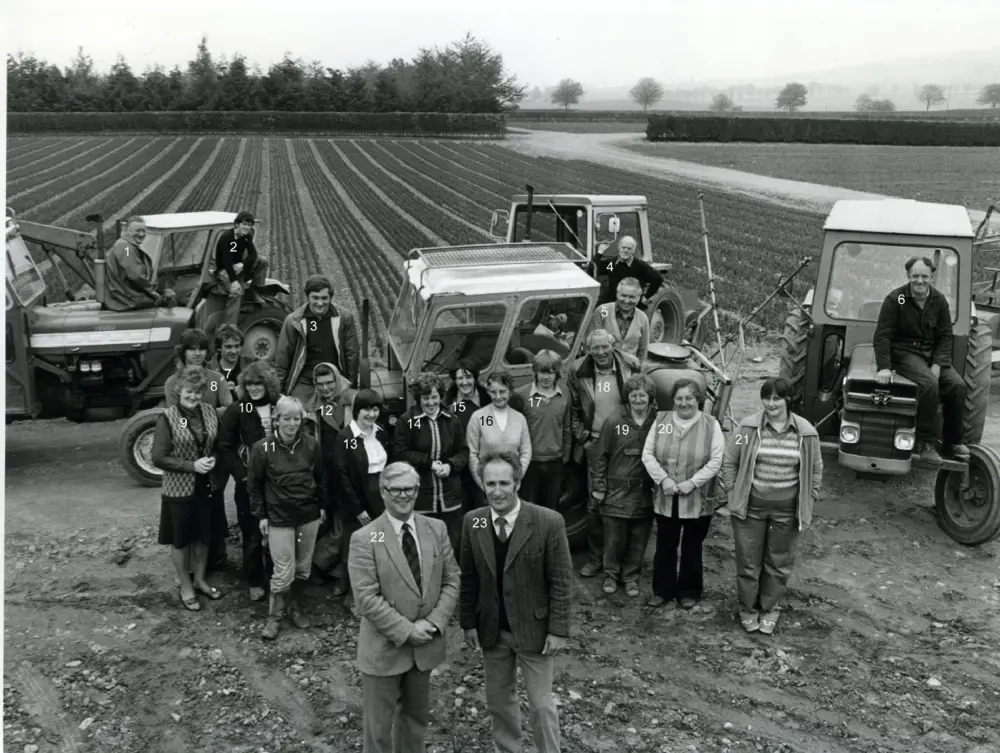
1981 - An image from an open day at Newton in 1981, to mark the 50th birthday of the site.
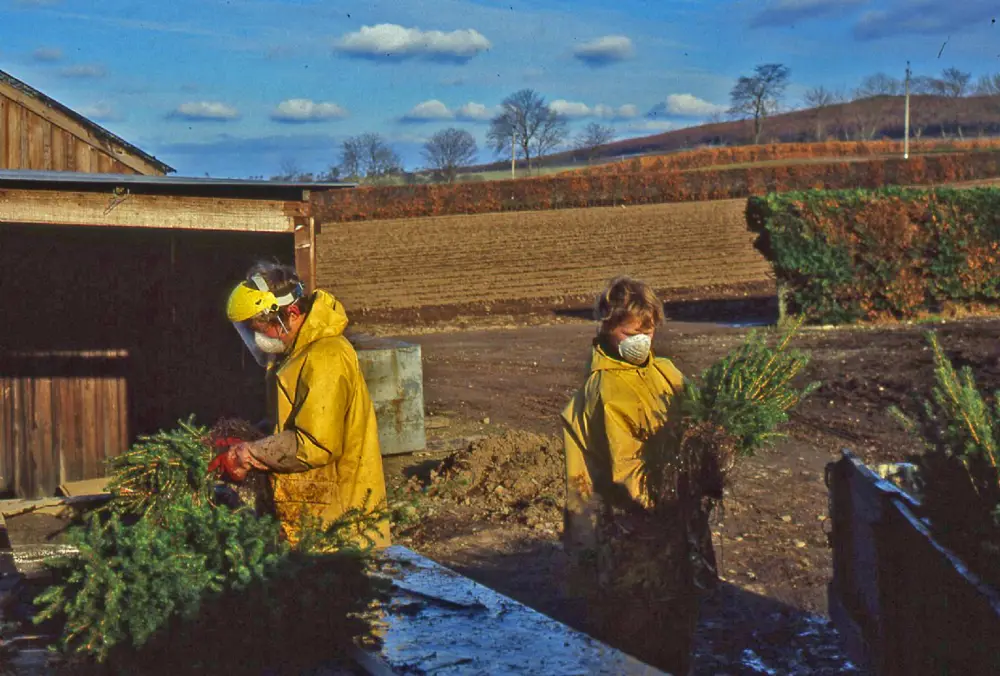
1986 - A close up shot of nursery workers in protective clothing and masks hand dipping bundles of Sitka spruce into a tank containing insecticide. The insecticide was used to help reduce the attacks by pine weevils on newly planted trees in restocking sites which if not protected often resulted in high death rates of planted trees.
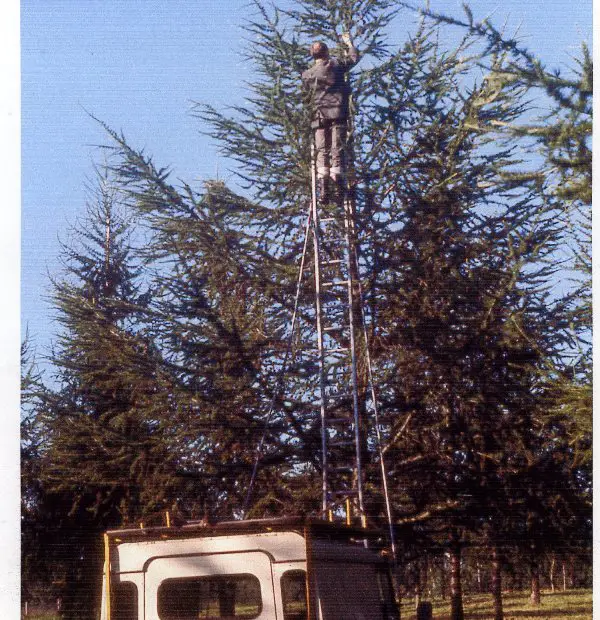
1991 - Seed collection, a crucial task, and one suited to those with a head for heights!
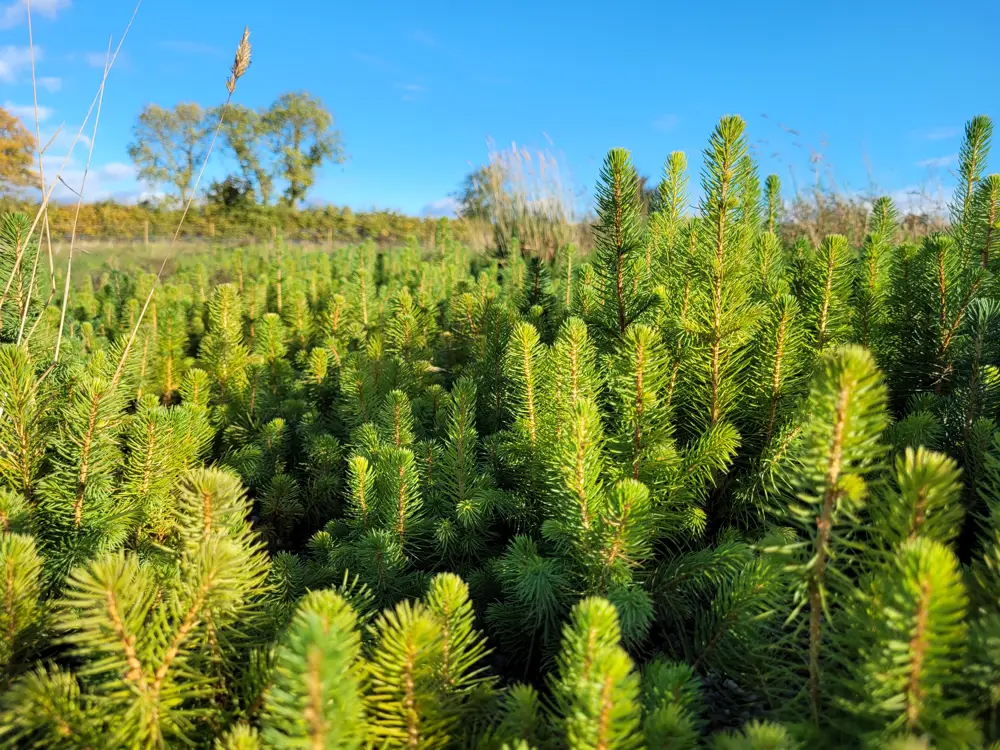
2021 - Young trees in the sunshine. When first planted, the trees are allowed to grow in transplant beds (at random in roughly metre-wide rows) before later being lined out to provide more space.
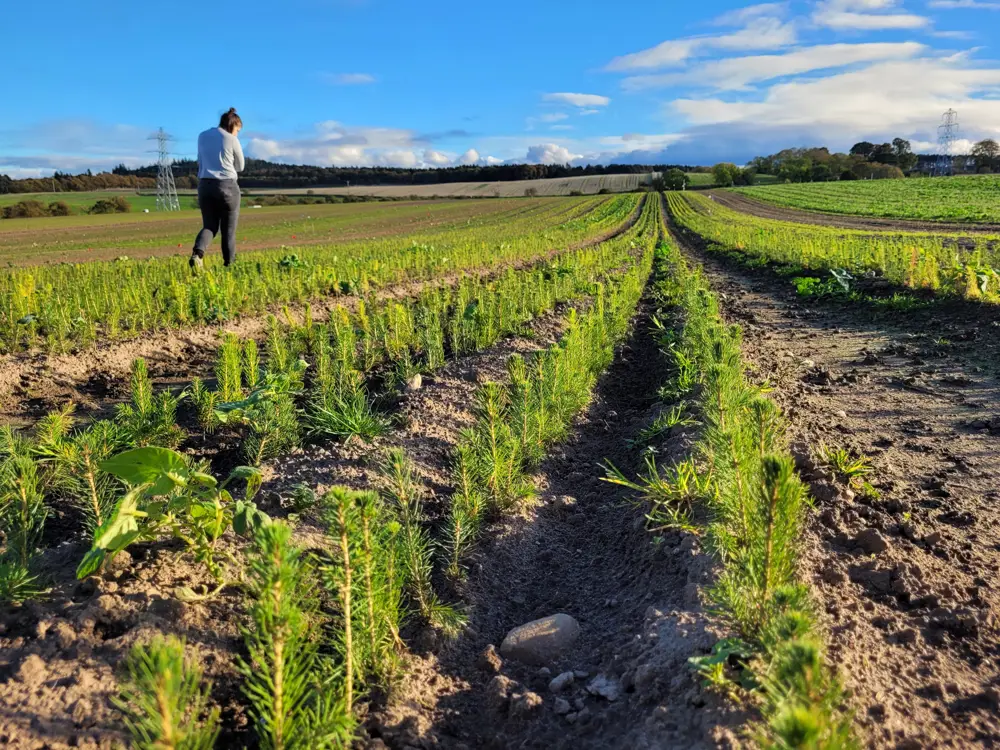
2021 - Trees after being lined out. This provides more space for each tree to grow.
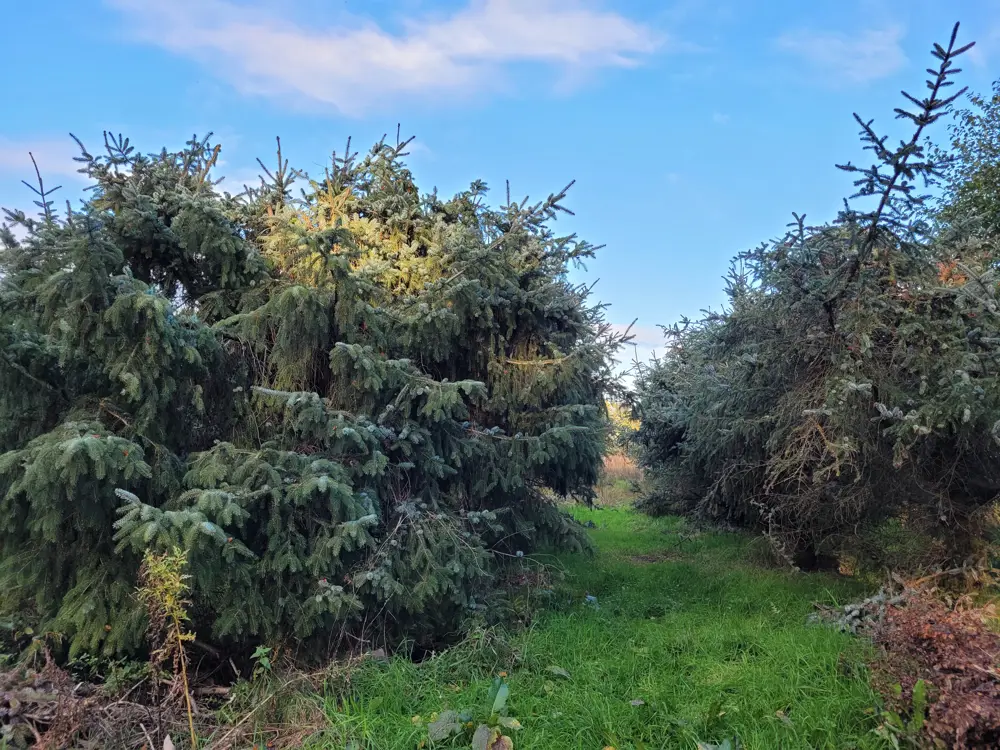
2021 - These trees might not look the best, but they're among the most valuable in the country. This seed orchard provides the seeds that become trees in forests across Scotland. They're kept relatively squat in order to make harvesting seeds easier.
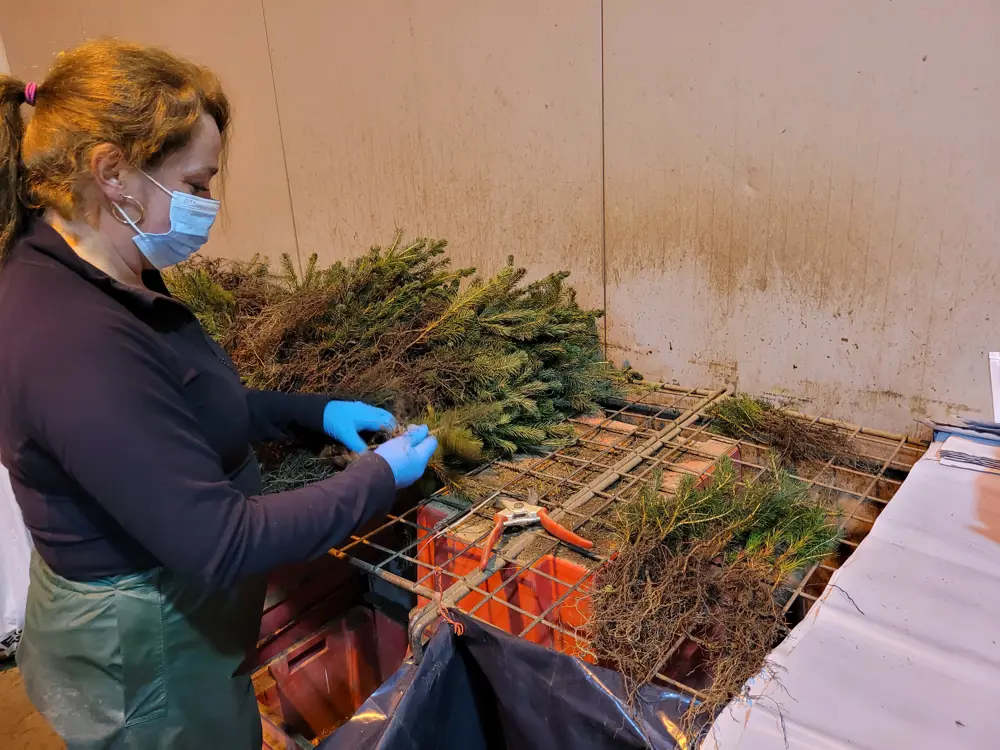
2021 - A woman grading trees. Every tree grown at Newton is graded by hand for quality, and gathered into bundles of 50 or 100 before being packed away ready for transportation.

2021 - This warehouse is the Newton humidor. It is kept at 2°C and 100% humidity which keeps the trees in optimum condition while in storage. There is also a cold store.

2021 - While Newton Nursery mostly grows conifers, other nurseries in the same area produce broadleaf trees like these oaks. They are often delivered to Newton first before being sent throughout the country for our forests.
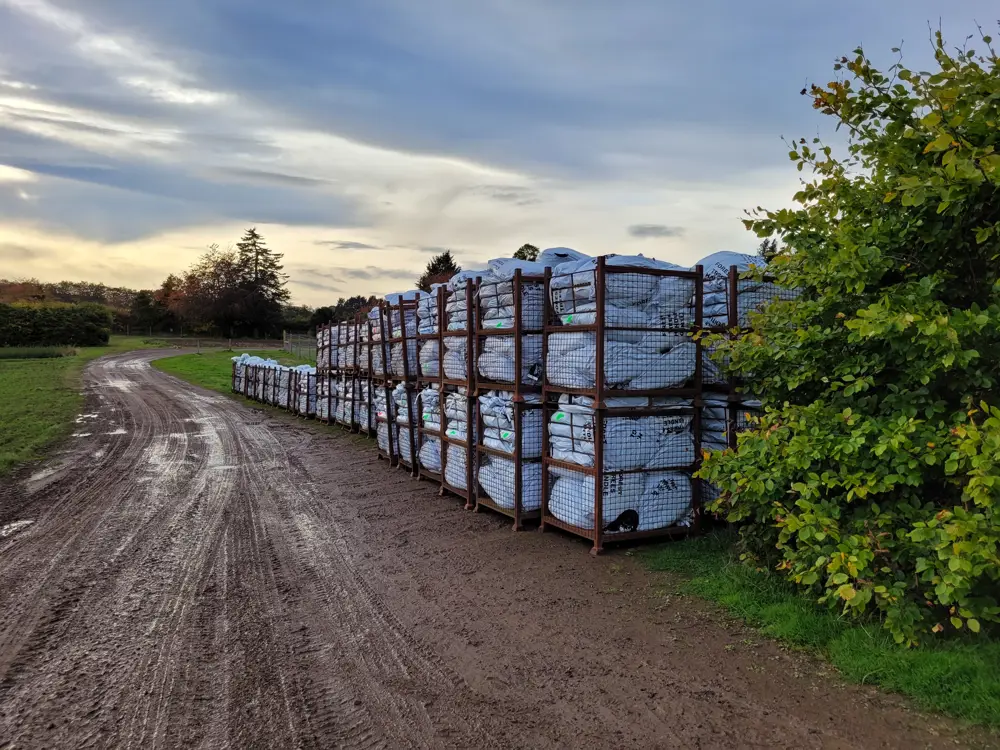
2021 - These crates altogether contain thousands of young trees which will soon be transported to forests throughout Scotland for planting.